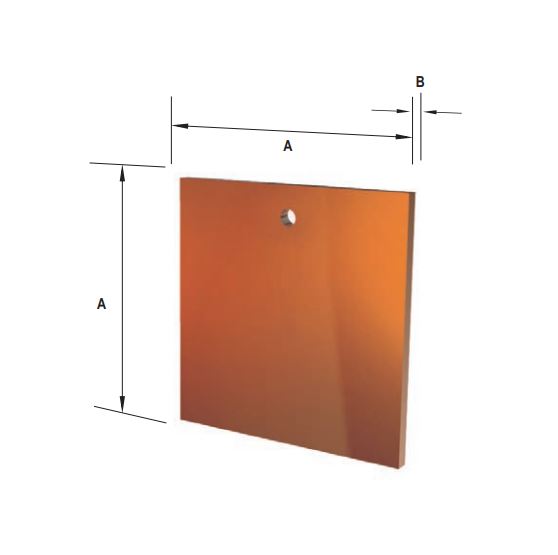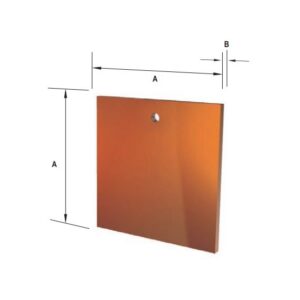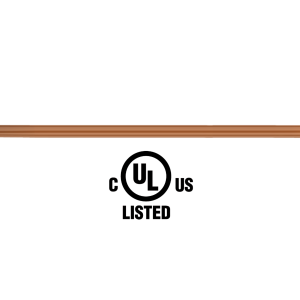Description
Copper plate grounding is a type of electrical grounding system that uses a large copper plate buried in the ground to provide an effective electrical ground. In this system, a copper plate is buried in the ground near the building or structure that is being grounded. The ground wire from the electrical system is then attached to the copper plate using a ground rod connector, providing a secure and reliable connection.
Copper Plates for Grounding
Copper plate grounding is considered to be an effective grounding method because copper is a highly conductive material, which allows it to easily dissipate any electrical current that flows through it. This makes it a good choice for grounding applications where the electrical system may be subject to high currents, such as in buildings with large electrical loads or in areas with frequent lightning strikes.
Copper plate grounding systems are typically used in conjunction with other grounding methods, such as ground rods, to provide additional grounding protection and to ensure the overall effectiveness of the grounding system.
Copper plates may be more suitable than ground rods in situations where the electrical system is subject to high currents or where the soil conditions are not conducive to effective grounding using ground rods.
Copper Plates vs. Ground Rods
For example, in buildings with large electrical loads or in areas with frequent lightning strikes, the electrical system may be subject to high currents that can be difficult to dissipate using ground rods alone. In these cases, the added conductivity of a copper plate can help to more effectively dissipate the electrical current, providing better grounding protection for the building or structure.
Copper plates can be easier to install than ground rods because they do not require drilling or driving into the ground. To install a copper plate grounding system, the copper plate simply needs to be buried in the ground near the building or structure that is being grounded. This can be done using a shovel or other digging tools, making the installation process relatively simple and straightforward.
In contrast, ground rods require drilling or driving into the ground to create a hole for the rod to be inserted into. This can be a more labor-intensive and time-consuming process, especially in areas with rocky or heavily compacted soil. Additionally, special equipment may be required to install ground rods, which can add to the complexity and cost of the installation process.
Installation Procedure
To install copper plates for grounding, follow these steps:
-
- Choose a location for the copper plate near the building or structure that is being grounded. The copper plate should be buried in an area where it will be in contact with the earth and where it will be protected from damage.
- Dig a hole in the ground at the chosen location, using a shovel or other digging tool. The hole should be large enough to accommodate the copper plate and deep enough to allow the plate to be completely buried in the ground.
- Place the copper plate in the hole and cover it with soil, using a shovel or other tool to pack the soil firmly around the plate.
- Attach the ground wire from the electrical system to the copper plate using a ground rod connector. This will provide a secure and reliable connection between the copper plate and the electrical system.
- Test the grounding system to ensure that it is functioning properly and providing effective grounding protection for the building or structure. This can be done using a ground resistance tester or other specialized equipment.
It may be beneficial to use an earth enhancing compound in the installation of a copper plate grounding system. An earth enhancing compound, also known as an earth enhancing gel or compound, is a substance that is applied to the ground to improve its conductivity and enhance its ability to dissipate electrical current.
It may also be necessary to consult with a licensed electrician or other qualified professional for assistance with the installation process.










